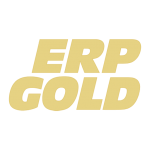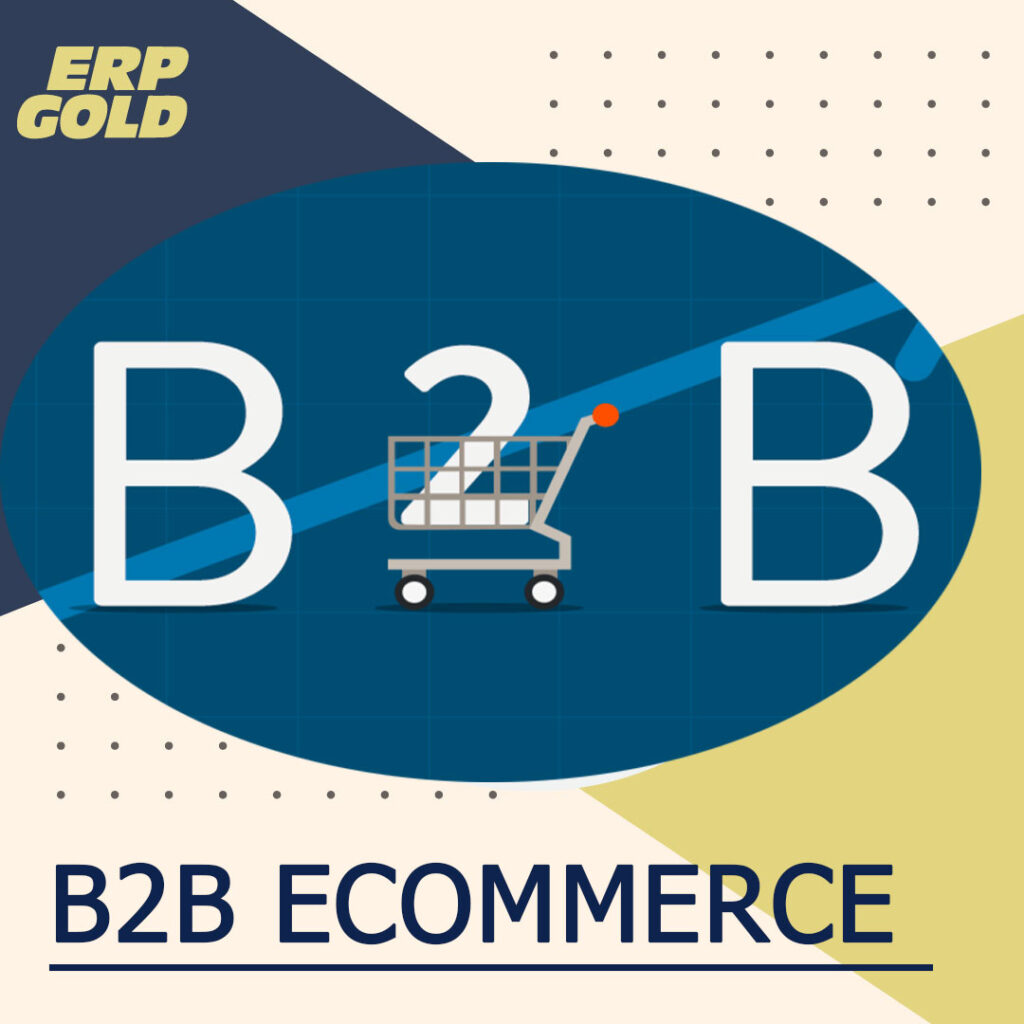The eCommerce ERP software is an online system that is made specifically for the management of online stores. This software makes it easy to manage your inventory, orders and payments, while also providing a means to communicate with your customers through various channels.
You have one aim, whether you’re a business-to-business (B2B), business-to-consumer (B2C), or direct-to-consumer (D2C) eCommerce store. However, when your company grows, the complexity of your operations grows as well. Where formerly ERP Gold could handle your accounting, Salesforce could take your CRM, and ERP could handle your inventory management, you now expect more than these disconnected, compartmentalized platforms can provide. However, before that we need to know what ERP is to have an idea about it.
What is ERP . . . ?
Enterprise Resource Planning is the abbreviation for Enterprise Resource Planning. ERP software is a collection of powerful and strategic business process management technologies that may manage data inside a firm. While every company and organization operating today is unique, they all face the same fundamental challenge: they need a reliable and effective way to store and access information to remain successful in today’s commercial environment. ERP systems come into play in this situation. ERP systems integrate all aspects of a business into a single, comprehensive information system that anyone within the firm can access.
With the right ERP software in place, business owners and executives can automate and streamline back-office activities, assist employees in becoming more productive and successful, and gain real-time visibility into their operations.
You need systems in place that allow you to efficiently simplify, automate, and expand to compete in today’s more competitive and challenging business climate. This resource will guide you through selecting, implementing, and maintaining an ERP system for your business.
ERP and eCommerce Integration Fundamentals
To grasp how an ERP and eCommerce relationship works, start with eCommerce logistics, which includes accepting and delivering orders, processing payments, handling returns, managing inventory, ensuring security, calculating taxes, tracking financials, and providing customer support. These become more difficult to balance when your little business (maybe begun in your garage) expands into a full-fledged operation with a warehouse (or two, or three), a shipping fleet, and a large workforce.
Combining ERP with contemporary eCommerce technology may be done in a few ways. You may use the API of the eCommerce solution on your own, which gives you complete customization but also puts you in charge of the Integration.
You might also use an ERP system that has a built-in eCommerce link. The most flexible and future-proof option is likely an ERP with native connections, such as the Acumatica-BigCommerce Connector. The ERP company created the native interface with the eCommerce system, exposing as much of the ERP as the API allows. When “abnormal” business situations arise (which they will), the Integration is flexible enough to meet the marketplace’s ever-changing expectations.
What Are ERP Features Critical for Ecommerce Companies?
When your eCommerce company is ready to connect your eCommerce platform with an ERP system, there are a few key traits to look for in an ERP system.
1. QuickView of Book Of Accounts
While ERP Gold can handle your general ledger (GL), accounts payable (AP), and accounts receivable (AR), a cloud ERP system can handle those tasks while also providing real-time eCommerce updates. When a sale from an eCommerce site is entered into your ERP system, it appears in the sales order right away and is updated across all of your financial records, and the money is considered income as soon as it passes through.
In addition, an ERP system examines your finances, inventories, customers (including relationships and prospective), and sales. When you connect your eCommerce platform to your ERP, it extends the auditing system.
2. Customer relationship management.
CRM integrated with your ERP system, and your eCommerce system is a win-win-win situation.
A successful eCommerce company needs a consistent system for handling leads, contacts, prospects, and customer accounts and the ability to track what’s going on at each stage of the sales cycle. To put it another way, you’ll need a CRM system that’s appropriately connected and gives every department access to real-time, synchronized data from a single source.
Building a customer database within the integrated solutions allows you to easily reach out to your customers with offers like sales, discounts, and special promotions; these promotions are designed within the eCommerce platform, and the ERP system understands what it’s receiving and keeps track of it for later reporting.
Additionally, eCommerce ERP and CRM combination create an ERP commerce environment. Regardless of how customers buy your products, your unified CRM will associate each order with the appropriate consumer. It provides a 360-degree view of how your customers have interacted with you in the past and how they are doing
3. Inventory management.
Inventory tracking becomes increasingly difficult as a firm grows. You’ll need to know where your things are, and your customers will want to know if the item is available. This information may be delivered to everyone via an integrated ERP solution. Whether the goods are at a warehouse, divided across warehouses, or in transit, it allows for precise, real-time access to available inventory. You also have access to reorder quantities and inventory pricing.
It is no longer necessary to log in to many systems to receive the answer; the procedure is automated, and manual errors are reduced (or eliminated) (or eliminated).
4. Management of Shipping, Distribution, and Warehouses.
An integrated eCommerce ERP system, like inventory management, is the most accurate and effective way to handle your shipping, distribution, and warehouse management demands.
The distribution process includes wave and batch selection, packaging, PO receiving, putting away, transferring, and physical counting. These jobs get mechanized using ERP. EDI compliance is maintained by third-party EDI software, and warehouse staff can use phones or tablets to do their duties. The lot and serial number monitoring prevent mistakes, and third-party EDI software manages EDI compliance.
5. Information Management for Products.
Because you sell things to customers in various ways, having your product information centralized in an eCommerce ERP system is critical. This information might pertain to your vendors, product price, and customer-specific pricing, as well as possible product alternatives. Having all of your information in one place makes sending it to different places easier.
In essence, you’ve got a content management system. If you sell on several websites, for example, it can assist you to distinguish different audiences and broadcast information tailored to each.
Top Reasons to Integrate Your eCommerce with Your ERP
A better online experience, pricing management, access to important data, increased productivity, and process visibility is just some of the benefits of choosing an ERP solution based on the factors listed above.
However, It’s a well-known fact that eCommerce has grown more vital for retail businesses worldwide. Not only does having a solid online presence influence online sales, but it also influences offline purchases. However, maintaining inventory and storage for both online and offline businesses can be a difficult task. When you choose an ERP solution, you get a backend that brings all your sales channels together under one management system. below are reasons to integrate ERP with E-commerce system.
1. Reduces Data Redundancy, Human Involvement, and Error: Payment and shipping information, online orders, and web customer details are all incorporated into the ERP system with the Integration of an e-commerce storefront. It also aids in the uploading of item and inventory data from ERP to the e-commerce platform. In any case, the Integration aids in reducing the need for re-entry of data. As a result, data duplication, human engagement, and inaccuracy are reduced.
2. Lowers Operation Costs: Real-time data from the ERP system is available on the storefront, allowing customers to track order progress, available inventory, and shipments with tracking numbers. With automated data inputs, errors, rework, and order backfires can all be avoided. All of these advantages contribute to decreased operational costs.
3. Boosts Internal Productivity: Integrated systems play a crucial role in streamlining various organizational activities. This has reduced the involvement of human resources in the procedures. The web sales orders are linked to the ERP system in real-time, allowing a back-office ERP user to track the order and begin processing immediately. As a result, Integration shortens the order fulfillment process.
4. Lowers Inventory Costs: sAll information about web sales is instantaneously available in your ERP system. The ERP item inventory will be updated based on these online transactions. With an up-to-date list and online sales information, an ERP user can plan the purchase appropriately, decreasing inventory costs.
5. Boosts Customer Satisfaction: The ability to get up-to-date product information, order tracking information, and inventory availability information via an ERP system increase a customer’s satisfaction level.
6. Generates Financial Reports in ERP: E-commerce systems generate financial reports. The company may develop trial balance, balance sheet, cash flow, and P/L Statements by integrating e-commerce with ERP, providing vital financial information clarity.
7. Gaining Better Control of Your Business: Integrating an e-commerce site with an ERP system helps business owners better control their operations, resulting in competitive advantages.
8. Management of Product and Its Pricing.
Like product information management, product and its pricing management refers to the capacity to control product and its pricing inside an ERP system. You have the option of tailoring your response to different types of customers. In B2B, for example, if customer number one has negotiated price but customer number two, a new client, has not, you may send the appropriate data to the eCommerce platform. You may also set up access rights for certain customers to your product (e.g., customer one has 100 percent access and customer two has 80 percent ). (For example, client one has complete access, but customer two only has 80%).
ERP Gold provides multi-channel inventory management software that integrates directly with your eCommerce platform, so you don’t have to worry about manually entering data or creating spreadsheets. This saves time and ensures accuracy. With ERP Gold, you can track your inventory from anywhere, from the office to your warehouse to a customer-facing sales counter. And because it integrates with your eCommerce platform, you can update stock levels on the fly, so you never run out of products to sell.

